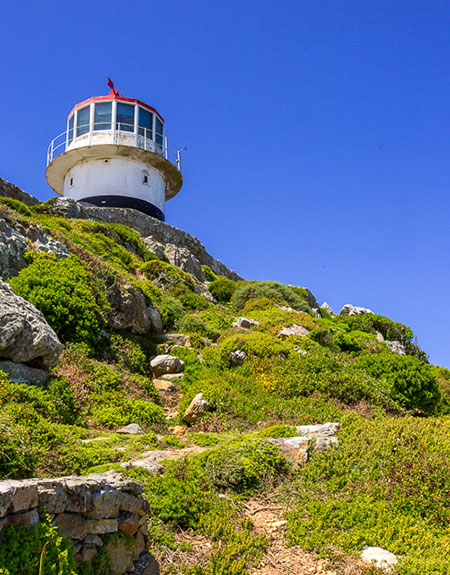
118. “Night Owls”
Christopher Rowley is a very good film director. Born in the UK, he studied graphic arts in London, married a South African girl and came out to Johannesburg where he established a reputation for directing topflight commercials. However, he really wanted to make documentaries and eventually theatrical feature films, but he was caught in a trap. His major income came from making commercials – but every time he tried to employ another director to do this, the agencies insisted that he be the director.
He managed to make some documentaries in between commercial assignments but quite often he was called away to shoot a commercial in the middle of the documentary. This is where I came in. I had already established myself as his primary documentary film writer as well as effectively producing and production managing the documentaries for him. Whenever he was given a big TV commercial to direct, he would hand over the directing of the documentary to me.
I was happy to oblige. I was getting good experience with a top professional company and, although I remained a freelance, for a few years I could rely on getting regular work from Christopher. When he landed the contract to make “Night Owls,” however, it turned out to be the toughest assignment of my career. To begin with, Christopher was free to direct a series of six half-hour films on the topic of people and activities that happen at night. The idea was that I write the script, then set up the film locations during the day for Christopher to film at night.
Christopher lasted less than a week before he was hauled off to make a couple of commercials for a major client. He could not refuse without endangering his very profitable commercials business. So, I was suddenly landed with the task of writing, directing and producing the series. Budgets for documentaries were notoriously bad and Christopher said that he simply could not employ anyone else to help me out.
As a result, I spent the next couple of months, during the days, setting up locations, securing people to be interviewed, arranging transport, etc., etc. Then most nights I would go out with the camera/sound crew and direct the sequences. In a word, it was exhausting. It reminded me of the first film I ever directed with Dennis Bughwan, when I drove a taxi all night until about 5:00 a.m. in the morning, grabbed a couple of hours sleep and rushed to start filming with Dennis by 8:00 a.m. This was even tougher. Six half-hour episodes represented three hours of film shot over two months. I think what saved me was discovering the amazing things that go on at night, when most law-abiding citizens are fast asleep.
I don’t really remember the sequence in which we shot the films, nor can I remember all the different activities that we filmed. But a number of them stand out. We travelled to Cape Town, Durban, Johannesburg and Pretoria as well as some remote districts, such as the farmers who did some of their harvesting at night with huge combine harvesters working with powerful spotlights. We also travelled to Richard’s Bay, a small but intensely active port where coal and various minerals are loaded aboard ships for distribution around the world. We were amazed at the mountain-sized storage of coal awaiting shipment. Bulldozers and cranes worked throughout the night to load the coal.
We were still shooting on film in those days and, despite the fact we had a couple of top-class cameramen on the team, we received a shock when the film was processed. Despite the cameraman allowing for the fact that we were filming at night and having some powerful lights to reveal one of the bulldozers stacking up the coal, this sequence was unusable. The blackness of coal shot at night seemed to have almost swallowed the light that was focused on the bulldozer, and we regretfully had to scrap the sequence. Fortunately, it was the only scene that gave us problems – but it did provide a talking point amongst the technical guys for some weeks to come.

Moving about as far south as we could, we filmed the new Cape Point Lighthouse. The old lighthouse was built in 1857 at the top of a high cliff 860 feet above the sea. Ironically, its altitude caused two problems: firstly, it gave the impression that it was further away than it actually was, and ships would approach too closely to the perilous rocky coastline known as the Cape of Storms with its fierce currents and huge swells; secondly, it is an extremely foggy area and the light from the lighthouse was often invisible as its height plunged it into the thickest impenetrable fog. After a Portuguese liner travelling from Mozambique to Lisbon struck the rocks and sank in 1911, the new lighthouse was built on a lower cliff only 285 feet above sea level.
All the South African lighthouses were manned by a curious type of loner who seemed to enjoy the solitude of a life perched in a round house on top of an isolated rock. Today, they are virtually all automated. We did manage to speak to the last of the Cape Point lightkeepers whose work was primarily at night.
In Cape Town, we filmed an all-night café and takeaway. Also, a flight on a South African Air Force Shackleton that was part of a squad of planes patrolling the Southern Ocean for any intrusion into the country’s territorial waters (set at 12 miles from the shore by international accord). The plane was crammed with computers and radar screens. I doubt whether the technicians aboard ever got a chance to look out over the spectacular scenery along the coastline.
Game drives at night are featured at many of the game parks and reserves dotted all over the country, roaming the veld in open Land Rovers fitted with powerful spotlights hand-held by a game guard and often by one of the passengers, as they scour the land on either side of the dirt track for any sign of game. Strangely, the lights don’t seem to scare the game. In this way, some spectacular sightings can occur, often allowing the vehicle to drive closer to the game than in daytime. The game ranger in charge of each vehicle has the responsibility for making sure that he or she does not put the passengers in danger. They are acutely aware of the territorial limits that each animal places between itself and any intruder. Go too close to lions and they can attack. Elephants and rhino will charge a vehicle but only if it invades its territory. The most bad-tempered of the lot are the Cape Buffalo: they may look somewhat like cattle but don’t be fooled. They are particularly dangerous. The main problem with night drives is that small animals, if caught on the dirt track in front of the vehicle, very often become transfixed, almost hypnotized by the spotlight and the driver has to be sure the animal has moved away before continuing the drive.
In complete contrast, we visited a branch of a major supermarket chain whose boast was that when they opened the store, they threw away the keys! Situated in Hillbrow, Johannesburg’s high-density square mile or two of high-rise apartments, it remained open 24 hours, seven days a week. Even Christmas and other holidays did not phase them. We filmed them at 4:00 a.m. in the morning. Steady streams of customers were busy shopping at that time.
We went with the police on a drug bust; and later an ambulance that was called to a car that had crashed into a storefront window. We filmed a woman being loaded into the ambulance with injuries that were not considered life-threatening. As we covered the scene, the driver limped over to us and said that we could not film them as the woman was not his wife. We agreed to do some creative editing that would not reveal either of their identities. The focus of our sequence was, of course, the Night Owls, the ambulance men and women who work the night shift.
I had contacted the South Africa Railways head office and explained that we would like to film a rescue team attending a train wreck. To my surprise, they were enormously cooperative and said they would create a “train wreck” for us. They did a magnificent job. With the use of some huge cranes, they tipped a steam engine and a couple of coaches onto their sides beside the railway line. It was amazingly realistic as the rescue team moved in and reconstructed a rescue, as well as the cranes lifting the engine and coaches back on the track. It was the definite highlight of the series.
It was, overall, a fascinating experience to meet and learn about a virtual army of workers that work while most of us are asleep. They are a bunch of unsung heroes and heroines that keep a country going throughout the night. Apart from my exhaustion by the end of the shoot, it was one of the most satisfying movie projects I have ever worked on.
In many respects, working with the ExoTech team is similarly satisfying even though it’s a completely different concept – but we know that the end product, a working model of ExoBrain, not so far away anymore, will affect world populations as much or more than the Night Owls that keep the wheels of a nation running!

